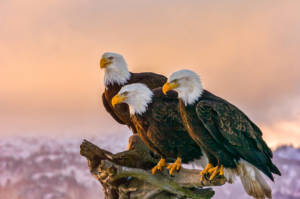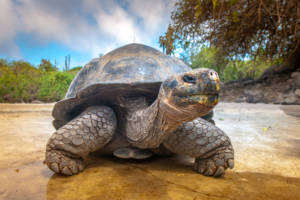
Before it was a US national emblem, the Bald Eagle held special significance within the religious beliefs and legends of several Indigenous cultures.
Eagles are commonly regarded as majestic and powerful creatures. As birds of prey, they’re members of the order Accipitriformes, which also includes many other types of raptors such as hawks, kites, and ospreys. They have captured humankind’s imagination for millennia, as proven by myths from around the world as well as the bald eagle’s place as a recognizable symbol for the United States. Yet before this bird was chosen as a US national emblem, it held special significance within the religious beliefs and legends of several Indigenous American cultures.
The Eagle’s Significance in Pre-Colonial America
Eagles can be found in the stories of many civilizations all over Turtle Island. Most bestowed honored tasks and roles upon these birds, crediting them as divine messengers or chiefs among the birds. In an article discussing the bald eagle’s recovery from near extinction, the United States Fish and Wildlife Service offered a short list of these legends:
- One Navajo story depicts a warrior changing one of a slain monster’s offspring into an eagle to prevent it from growing up and adopting evil ways.
- Among the Dene peoples of Alaska and northwestern Canada, the eagle embodies gratitude in its offerings of food during lean times to a prince who’d fed it salmon when sustenance was plentiful.
- The Pawnee regard the eagle as a fertility symbol thanks to its tendency to nest high above the ground and its attentive watch over its young.
An archived 2003 piece from Mashantucket Pequot Museum and Research Center details even more evidence. Various artifacts have been discovered showing how Indigenous cultures venerated eagles, including their features in headdresses and other clothing items.
An Endangered Species Returns to Greatness
Rachel Carson’s 1962 book “Silent Spring” called attention to the devastating effects of careless pesticide use on our ecosystems. Writing for American Bird Conservancy, Rebecca Heisman discusses how Carson’s emphasis on DDT’s impacts on bird populations helped launch environmental activity and new government policies. The bald eagle was one species that benefitted from these activities, as it was granted legal protections in 1978. Thanks to the growth of its populations, it was removed from the endangered species list in 2007.
Modern Use of Eagle Feathers
Eagle feathers are still considered sacred today by many Indigenous people. As one Mohawk man explained to independent historian Glenn Welker, wearing or holding these feathers is thought to honor, and gains attention from, the Divine. Feathers are also included in ceremonial regalia and used in the Sun Dance rites of Great Plains cultures to carry prayers of the sick to the Creator. The Pawnee Nation’s website explains the significance of eagle feathers in how its flag is displayed. This banner is customarily attached to an old Pawnee lance with a spearhead at its tip. Affixed to it are four eagle feathers, representing the four bands that comprise the entire nation.
Currently, U.S. federal laws govern the possession and use of eagle feathers. However, they restrict ownership to individuals who can prove that they’re members of federally recognized tribes. Continued controversy surrounds these statutes, especially because those unable to document their Native ancestry are shut out of the process. A June 2015 Arizona Public Media piece also divulges that the waiting list for eagle feathers is lengthy, with potential recipients getting their requested feathers after several months.
A Magnificent Bird With Timeless Symbolism
The American bald eagle holds a distinctive place in many Indigenous American cultures. Once threatened with possible extinction, this species has made a major comeback over the last several decades. Contemporary legal realities pose challenges for Native people wishing to use their feathers for ceremonial and religious purposes. Nevertheless, reverence for the creatures continues into the 21st century.



